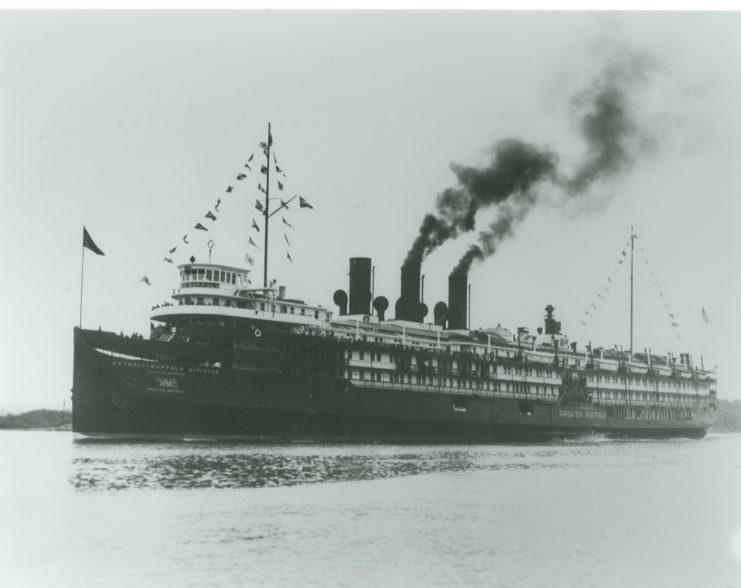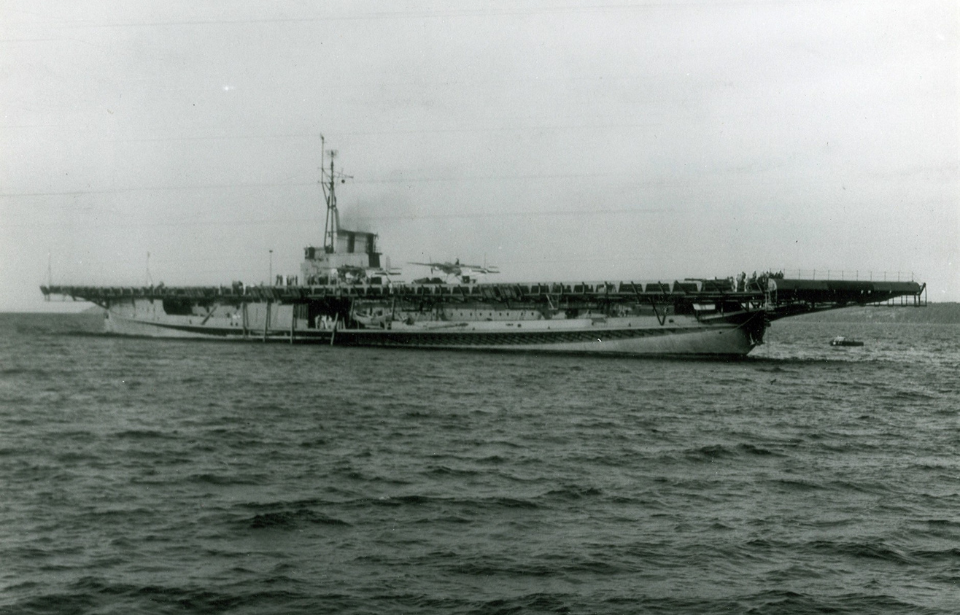Turning luxury vessels into aircraft carriers

The concept of repurposing civilian ships for training pilots was first proposed by Cmdr. Richard F. Whitehead, an aviation aide based at the Great Lakes Training Center at Glenview Naval Air Station, Chicago. Whitehead saw the opportunity to use these ships to train pilots for combat in the safety of the Great Lakes, far from enemy dangers.
At first, military officials were not particularly enthusiastic about the idea, but the Japanese attack on Pearl Harbor in December 1941 changed their minds quickly. Given the shortage of aircraft carriers for the frontlines, Adm. Ernest J. King speedily endorsed Whitehead’s proposal.
USS Wolverine (IX-64)

Launched in November 1912 as the Seeandbee, the USS Wolverine began its journey as a lavish side-wheel paddle steamer, serving the Great Lakes region. Equipped to accommodate up to 6,000 passengers and transport 1,500 tons of cargo, it regularly traversed between Cleveland, Ohio, and Buffalo, New York.
In 1942, the Seeandbee was acquired by the US Navy with plans for conversion into an aircraft carrier. Its design garnered attention for the stability and maneuverability advantages provided by its side-wheel paddles. The conversion included the addition of a 550-foot-long wooden flight deck, a superstructure, and arresting cables.
Renamed the Wolverine, the vessel bore a striking resemblance to a smaller aircraft carrier externally. However, it lacked several key features typical of larger, ocean-faring carriers, such as armament, armor, elevators, and a hangar deck. Additionally, its flight deck was situated closer to the waterline.
USS Sable (IX-81)

Launched in October 1924 as the Greater Buffalo, the USS Sable began life as a side-wheel excursion steamboat. Everything about her oozed luxury, with her Renaissance design affording her the nickname, “Majestic of the Great Lakes.” While operating in the Great Lakes in this capacity, she could hold over 1,500 passengers, 103 vehicles and around 1,000 tons of cargo.
Upon being acquired by the US Navy, Greater Buffalo had her cabins and superstructure removed. Steel supports were added, and, unlike Wolverine, she received a steel flight deck. While the vessel was initially meant to have a wooden one installed, the decision was ultimately made to go with metal, so the military could test non-skid coatings. Just like her sister ship, she was renamed – Sable – and wasn’t equipped with armaments, armor, elevators or a hangar deck.
An interesting fact about Sable during this time is that a large number of her crew members were survivors of the USS Lexington (CV-2), which had been lost during the Battle of the Coral Sea.
Training pilots in the Great Lakes

By 1943, both the USS Wolverine and Sable – nicknamed the “Corn Belt Fleet” – were stationed out of Navy Pier, in Chicago. They were assigned to the 9th Naval District Carrier Qualification Training Unit (CQTU), and operated throughout Lake Michigan.
Trainees were taught how to takeoff and land on aircraft carriers, with the idea being that, if they could successfully accomplish their tasks on the shorter flight decks, then the larger ones wouldn’t be an issue. While conducting their training, the pilots were made to keep their cockpits open, in the event of a crash, and to “graduate” they had to carry out 10 (later eight) takeoffs and landings.
Training occurred seven days a week. However, it was often curtailed due to a lack of wind over the decks of the aircraft carriers. In order for aircraft to effectively take off, they need a certain amount of wind, and the lack of it over Lake Michigan meant that heavy aircraft like the Grumman F6F Hellcat, Vought F4U Corsair, Douglas SBD Dauntless and Grumman TBM Avenger were unable to operate from them.
Over the course of the Second World War, Wolverine and Sable trained 17,820 pilots, including future US President George H.W. Bush, and were the sites of 116,000 landings. Fewer than 300 aircraft were lost. On top of training aviators, Sable was also used to test the TDR-1, a wooden remote-controlled drone.
Decommissioning of the USS Wolverine (IX-64) and Sable (IX-81)

After World War II ended, the USS Wolverine and Sable were taken out of commission and struck from the Naval Vessel Register. Wolverine was put up for sale to the public, either for flag operations or scrapping, and was eventually sold for scrap in December 1947.
Are you a fan of all things ships and submarines? If so, subscribe to our Daily Warships newsletter!
The Great Lakes Historical Society’s effort to convert Sable into a museum was not successful. Following that, the ship was sold to the US Maritime Commission, where it was disassembled and scrapped.
